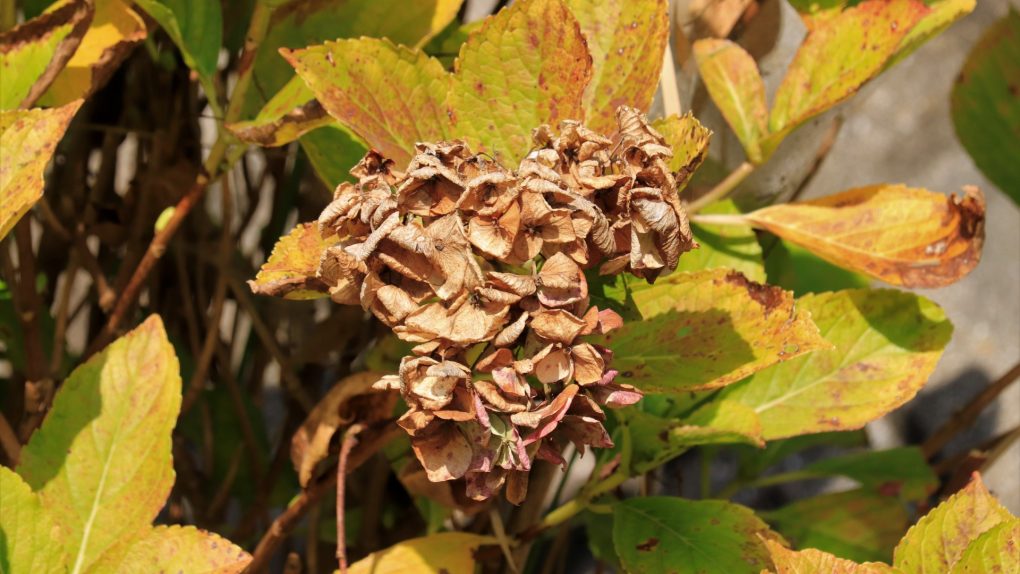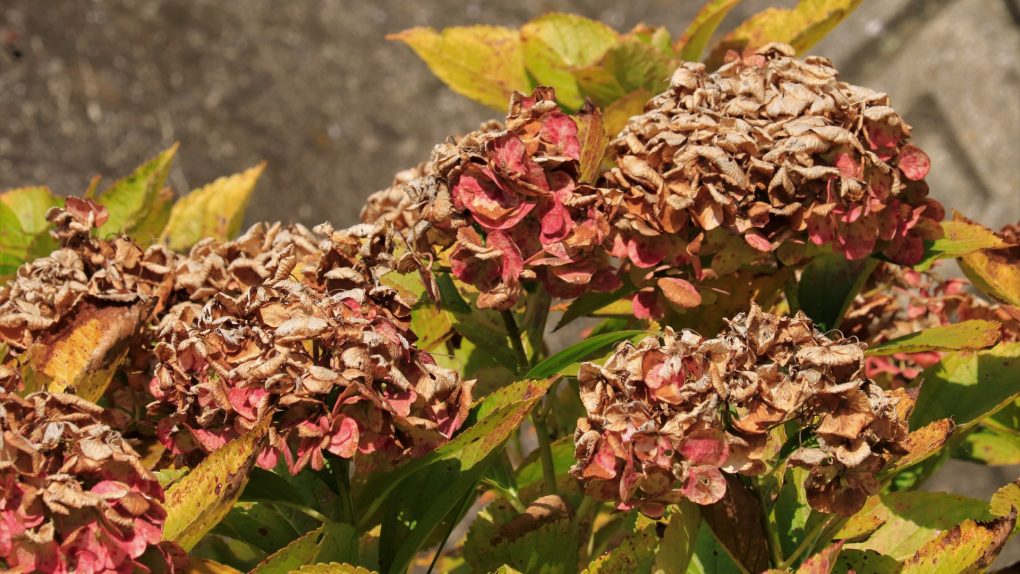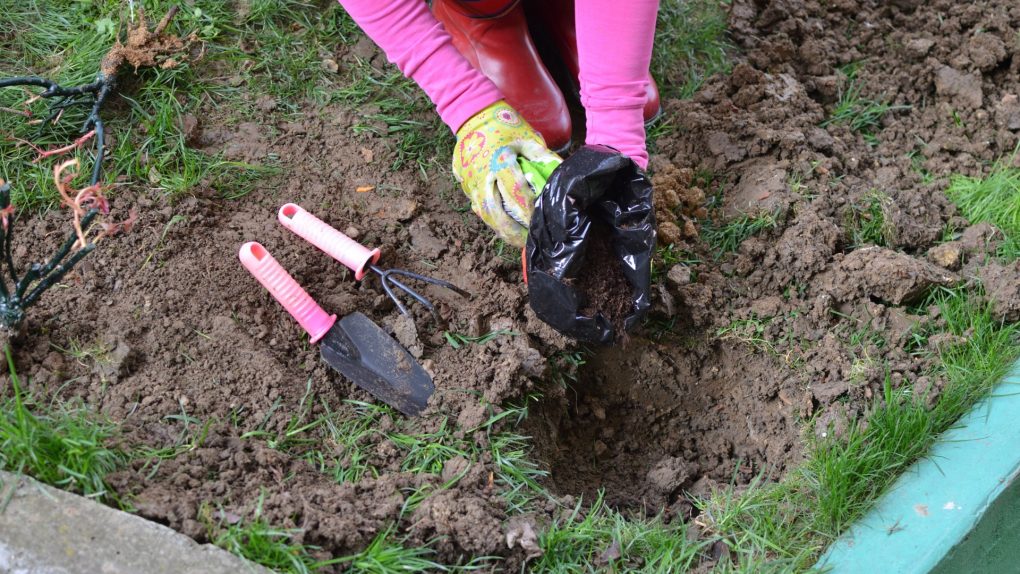Why Are My Hydrangea Leaves Turning Yellow? Common Causes and Solutions
Hydrangea leaves can turn yellow for several reasons, the most common cause being overwatering or poor drainage. Excess water in the soil can lead to root rot, affecting nutrient uptake and causing the leaves to turn yellow and eventually wilt or fall off. Ensuring proper watering, well-draining soil, and a suitable location will help prevent this issue.

Another possible cause is nutrient deficiency, particularly a lack of nitrogen. Yellow leaves with green veins is a sign of nitrogen deficiency and can be remedied by applying an appropriate fertilizer. Therefore, monitoring the plant’s overall health, providing proper care, and promptly addressing any issues to maintain vibrant and healthy hydrangeas is essential.
Table of Contents
Environmental Factors
Environmental factors can cause yellowing of hydrangea leaves. Here are some of the factors that can lead to yellowing:
Sunlight
Hydrangeas need sunlight to bloom, but too much sun can cause their leaves to turn yellow. So if your hydrangea is getting too much sun, you can move it to a spot with more shade.
Watering
Overwatering or underwatering can cause yellowing of hydrangea leaves. If the soil is too wet, it can cause root rot, leading to yellowing of the leaves. On the other hand, if the soil is too dry, the leaves can become dehydrated and turn yellow. Make sure you water your hydrangea regularly, but not too much.
Soil pH
The soil’s pH level can also affect the color of hydrangea leaves. If the soil is too alkaline, the leaves can turn yellow. To fix this problem, you can add sulfur to the soil to lower the pH level. Add lime to raise the pH level if the soil is too acidic.
Pay attention to these environmental factors and adjust to keep your hydrangea healthy and looking its best.
Pest and Disease
Hydrangeas can be susceptible to pests and diseases that can cause their leaves to turn yellow.

Fungal Diseases
Hydrangeas are prone to fungal diseases such as powdery mildew and leaf spot. Powdery mildew appears as a white or gray powdery coating on the leaves, while leaf spot causes brown spots on the leaves. Both diseases can cause the leaves to turn yellow and fall off.
Plant hydrangeas in well-draining soil to prevent fungal diseases and avoid overhead watering. Remove any infected leaves and dispose of them in the trash, not the compost pile. Fungicides can also treat fungal diseases, but it’s best to consult a professional before using any chemical treatments.
Pests
Aphids, scale, and other pests can infest hydrangeas and cause their leaves to turn yellow. Aphids are small, soft-bodied insects that suck the sap out of the leaves, causing them to yellow and curl. Scale insects are small, hard-shelled insects that attach themselves to the stems and leaves of the plant, causing yellowing and stunted growth.
To prevent pest infestations, regularly inspect your hydrangeas for signs of pests and remove any infected leaves or stems. Natural predators such as ladybugs and lacewings can also be introduced to the garden to control aphids and other pests. In severe cases, insecticides can treat pest infestations, but it’s best to consult a professional before using any chemical treatments.
Nutrient Deficiency
Hydrangeas require certain nutrients to grow and thrive. If they lack these nutrients, their leaves may turn yellow. Here are two common nutrient deficiencies that can cause yellowing leaves:
Iron Deficiency
Iron is an essential nutrient that hydrangeas need to produce chlorophyll. If they don’t get enough iron, their leaves may turn yellow. This is known as iron chlorosis. Iron chlorosis is common in alkaline soils with a pH greater than 7.0. Iron becomes unavailable to plants in alkaline soils because it reacts with other minerals to form insoluble compounds.
To fix iron chlorosis, you can:
- Add iron sulfate to the soil. This will lower the soil pH and make iron more available to the plant.
- Apply chelated iron to the soil, Chelated iron is a form of iron that plants more easily absorb.
- Use a fertilizer that contains iron, look for a fertilizer with a high iron content.
Magnesium Deficiency
Magnesium is another essential nutrient that hydrangeas need to produce chlorophyll. If they don’t get enough magnesium, their leaves may turn yellow. This is known as magnesium deficiency. Magnesium deficiency is common in sandy soils, which don’t absorb nutrients well.
To fix magnesium deficiency, you can:
- Add Epsom salt to the soil, Epsom salt is a good source of magnesium.
- Apply a fertilizer that contains magnesium, look for a fertilizer with a high magnesium content.
- Use compost or manure to improve soil fertility. This will help the soil hold onto nutrients better.

Conclusion
Yellowing leaves on hydrangea plants can indicate various issues, including nutrient deficiencies, diseases, watering problems, lighting conditions, and soil pH imbalances. By understanding the causes of yellowing leaves, gardeners can take steps to address the underlying problems and help their hydrangeas thrive.
Regular fertilization with complex mineral fertilizers can help prevent nutrient deficiencies, while proper watering techniques and suitable lighting conditions can help prevent yellowing leaves due to environmental factors. Addressing soil pH imbalances can also help prevent yellowing leaves.
